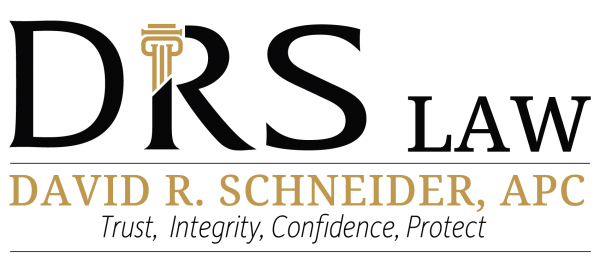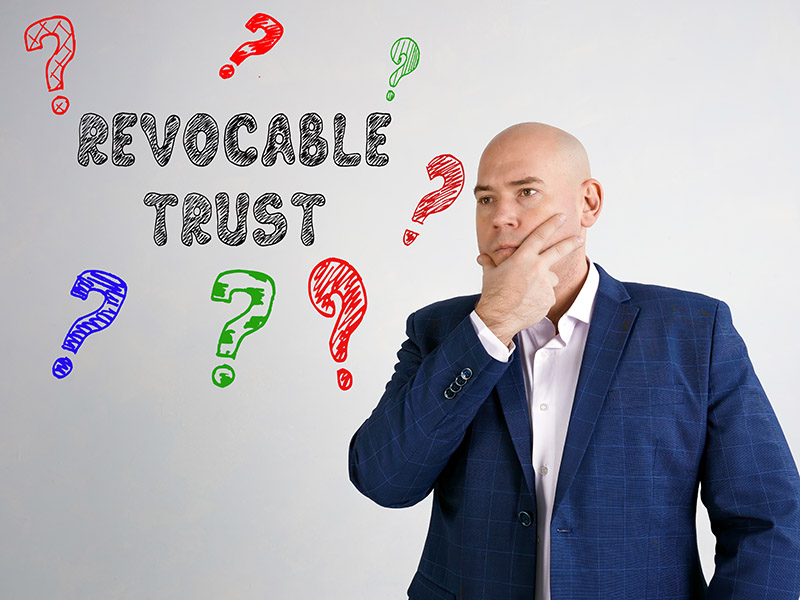Estate planning can be a complex subject, and many people have questions about how to effectively use a revocable living trust (RLT) as part of their strategy. Here, we’ll address some of the most frequently asked questions to help clarify this important topic.
What Is a Revocable Living Trust?
A revocable living trust is a separate legal entity capable of owning property. This allows you to retitle your assets, like a family home, into the trust during your lifetime. The trust is then managed by you (the grantor) for the benefit of the beneficiary (also you). The trust can be altered or revoked at any time while you are alive, giving you flexibility. Upon your passing, the assets are distributed according to the terms specified in the trust, avoiding the lengthy and costly process of probate. Learn more about trusts.
What Is a Probate Proceeding?
A probate proceeding is a court-administered process where the assets of the decedent are held for inventory and appraisal, debts are paid, and any remaining assets are distributed. Often, assets need to be liquidated to settle debts.
The probate proceeding is a public process that typically takes over a year and incurs costs and fees running into tens of thousands of dollars. An estate of just one million dollars will often have fees and expenses well over twenty thousand dollars.
The three factors trigger a probate proceeding—all must be present:
- Death
- Ownership of property in the decedent’s name
- Property with a gross value over $184,500
For example, if someone dies owning a home in their name valued over $184,500, probate is required. These thresholds affect nearly every homeowner in the state. Discover more about how trusts can help avoid probate.
What Are the Benefits of a Revocable Living Trust?
Revocable living trusts offer several advantages:
- Avoiding Probate: Assets in a trust bypass the probate process, allowing for faster and more private distribution. This occurs because the trust owns the assets/home, not the decedent.
- Control Over Assets: You can specify how and when beneficiaries receive their inheritance. For instance, it may not be advisable to give a significant inheritance to an eighteen-year-old without restrictions.
- Incapacity Planning: If you become incapacitated, the successor trustee can manage your assets without court intervention. Unfortunately, one in three persons aged 68 or older will experience significant incapacity.
- Flexibility: You can amend or revoke the trust as your circumstances or wishes change. For example, you may have named your brother to administer assets for your children, but now your children are adults.
Find out more about estate planning.
How Do I Create a Revocable Living Trust?
Creating a revocable living trust involves several key steps:
- Choose a Trustee – Typically, you’ll serve as your own trustee but will designate successor trustees to act when you can no longer do so, whether due to passing or incapacity. Generally, you will choose at least two persons in descending order to ensure your wishes are followed.
- Create the Trust Agreement – This should be done through an experienced estate planning attorney who is knowledgeable and has significant experience navigating family issues to ensure your wishes are met in all applicable circumstances. While online services are available, lacking professional guidance can lead to unintended consequences.
- Transfer Assets – You must retitle assets (like real estate, bank accounts, etc.) in the name of the trust. This is a common oversight—creating the trust but not transferring assets into it. Without this step, probate may still be necessary because the asset remains titled to the decedent. Properly transferring assets is essential.
- Review and Update – Regularly review the trust to ensure it meets your needs and reflects your current wishes. Life changes—people come and go, and laws evolve. Your trust should be adjusted from time to time.
Consult our estate planning attorneys for personalized assistance.
Can I Change My Revocable Living Trust?
Yes, one of the main features of a revocable living trust is its flexibility. You can amend the trust as your life circumstances change, such as the birth of a child, divorce, changes in trustees, or financial situations. You can also revoke it entirely at any time during your life.
What Happens to the Trust After My Death?
After your death, the trust becomes irrevocable, and your wishes become permanent. The successor trustee you appointed will manage the trust. They are responsible for settling debts, paying taxes, and distributing assets to beneficiaries according to the trust’s terms. Since the trust avoids probate, this process is faster, significantly less costly, and remains a private affair. Learn more about the administration of estates.
Do I Still Need a Will if I Have a Revocable Living Trust?
Yes. An effective estate plan utilizes a will in addition to a revocable living trust. This is referred to as a “pour-over will,” ensuring any assets not placed in the trust during your lifetime are directed into the trust upon your death. Most commonly, this is used for smaller items like cars, boats, or motorhomes. Explore more about pour-over wills.
Empower Your Estate Plan: Unlock the Benefits of a Revocable Living Trust
Estate planning can be daunting, but understanding how a revocable living trust fits into your overall plan provides peace of mind. If you have more questions or need assistance with creating a trust, consulting an experienced estate planning attorney is a wise step to ensure your wishes are honored and your loved ones are cared for.
Secure your family’s future today. Contact our experienced estate planning attorneys for a free consultation. We’ll guide you through every step of creating a customized estate plan that meets your unique needs.
Schedule a consultation with an experienced estate planning attorney.

